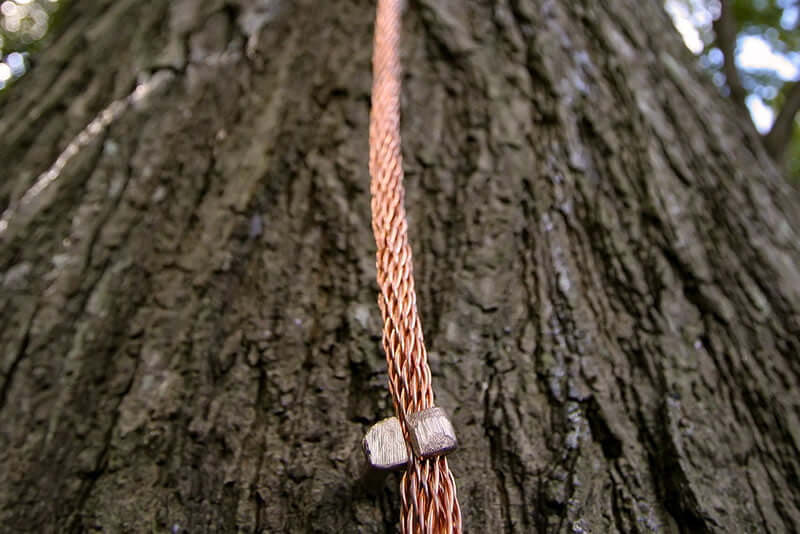A bolt of lightning can carry up to a billion volts of electricity. As you can imagine, it will do some damage if that hits anything living.
When lightning strikes a tree it can cause it to split its bark, start a fire, or even split the tree in two.
While some damages can be manageable, making the tree salvageable, a lot of the time, the tree will need to be removed for safety reasons.
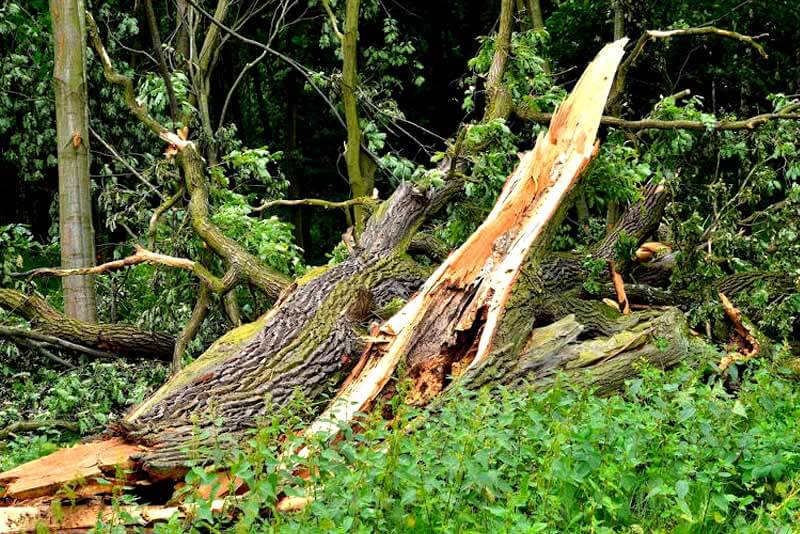
Whenever a storm has passed near your home or property, you should make it a habit to inspect your structures, including your trees. Be careful to limit your inspection to a visual level, and avoid touching or moving things to prevent harm.
Visible cracks and burns
In checking for signs of a lightning strike on a tree, one of the most obvious signs to look for is whether the tree’s bark shows signs of cracks, burns, or any visible signs of damage.
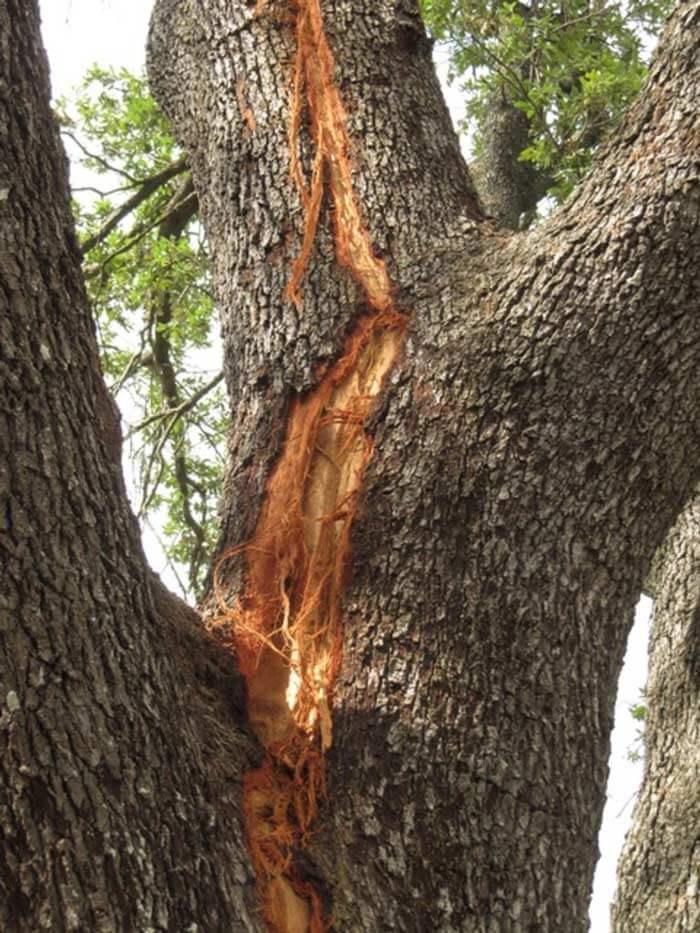
Burn marks or chared insides
If a tree is on fire or has recently had the heartwood burned with no visible signs of external fire damage, it may have been struck by lightning.
You will need to call a professional arborist to assess the structure of the tree.
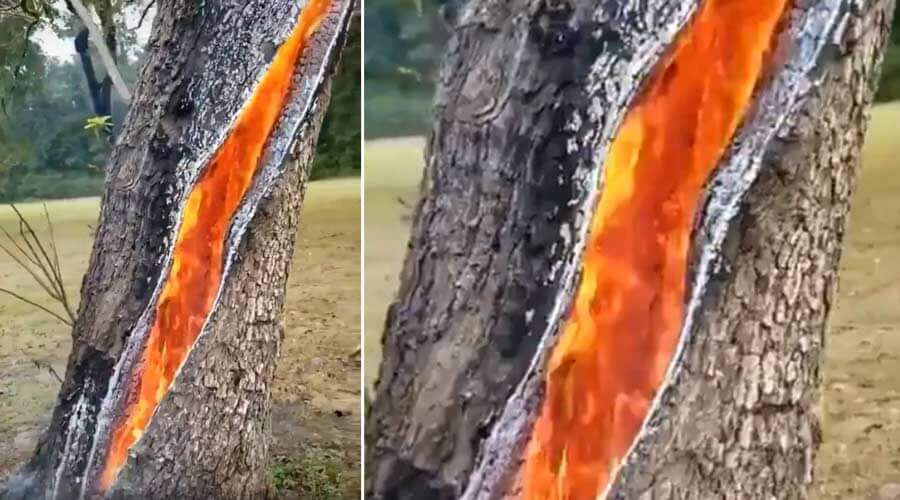
Visible tree deterioration
Aside from any damage that can be seen upon first inspection, you should also check regularly if your tree’s health has been gradually deteriorating or not. You can check your tree’s leaves and see if they have wilted or have lost their color.
Foliage wilting, visible tree deterioration, and other signs that are long-term are some of the signs that tree inspectors or arborists will look out for.
Additional signs of a lightning-struck tree
Other signs to look out for may also include:
- Signs of any splits or cracks that go can be followed down to the tree’s trunk
- Gradual loss of the tree’s health, including wilting and withering of leaves or flowers
- Damaged, blackened, and burnt parts of the tree, especially the tree’s bark
- Broken or fallen branches or certain parts of the tree
After a thorough inspection of your tree and your property, the arborist of the hired tree expert shall recommend an itinerary or show you a plan on whether to repair your tree.
If upon inspection they see that the tree is beyond saving, you might need to say goodbye to your tree to prevent more damage and harm to your property and your family.
Why does lightning strike trees?
Lightning tends to hit structures or objects that are tall. With this, trees are highly likely to fall as targets to lightning strikes.
Aside from their inherent height, trees become likely targets since electricity seeks to hit those objects with less resistance. The moisture and sap found in tree also contribute since they make good conductors compared to their surrounding air.
Apart from their height and anatomy, surrounding factors can also affect the susceptibility of trees to lightning strikes. These factors can include:
- If the tree is situated in an open area
- If the tree is situated near a body of water
- If the tree is at the edge of the forest
- If the tree is on a mountainside or on a hilltop
- If the tree is close to a building or nearby structure
- If there are electrical connections attached to the tree
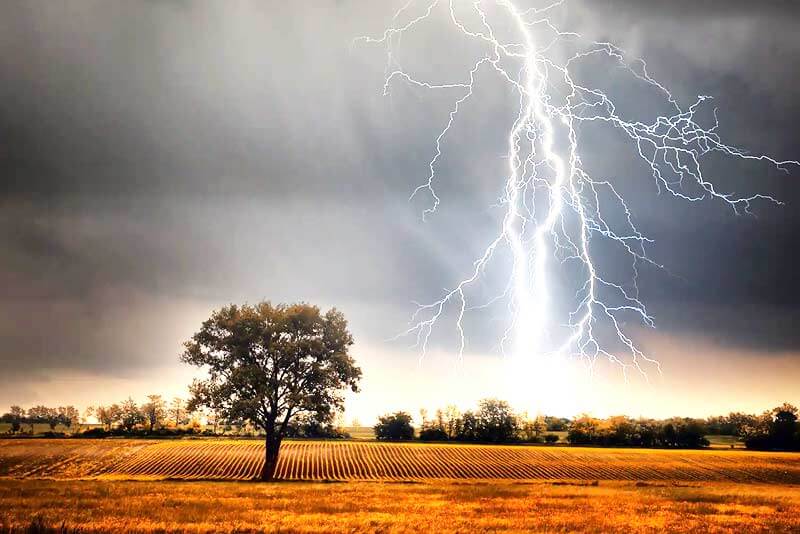
Can a tree live after being hit by a lightning strike?
It is important to know that after a tree gets hit by lightning, it will experience significant stress and harmful effects, which makes them require more attention and care.
Fortunately, trees that are hit by lightning are not automatically dead or up for tree removal. Most trees that are lightning-struck can survive and thrive, especially when the damage is not that serious.
Most likely, a tree will strive if only one side of it is destroyed. However, even if only a portion of it is affected, it must be taken care of and be tended to.
When a tree is left wounded and damaged, it can leave an entry point for diseases and insects. This could make the tree have declining health over time, especially when it is left uncared and untreated after a lightning strike.
How do you care for a tree that is hit by a lightning strike?
Prune the affected tree
One way to help your tree after being hit by a lightning strike is to prune the affected areas, parts, or branches. This also involves removing hanging pieces of damaged bark.
If you are reluctant or unsure how to prune a tree by yourself, you can seek and hire a professional to do this for you.
Provide supplemental fertilization
Providing your affected tree with supplemental fertilization and maintenance can also help it survive. By making sure that your tree gets enough water, supplements, fertilizer, and care, you can also support its growth and recovery.
Keep an eye on the affected tree
Aside from the things mentioned above, you should continue keeping an eye on your affected tree for the next few months. If you see signs of improvement, you can continue your methods. If not, you might need to remove it from your property.
How can you prevent lightning strikes on a tree?
Fortunately, you can prevent or minimize the chances of getting your tree hit by lightning. Some steps and methods can be installed to help you prevent your trees from getting hit, and it is better to adapt this before you get your trees damaged.
There are available lightning protection systems that you can have installed to help you protect your valuable trees, or even just vulnerable trees around your property.
Do the lightning protection systems work?
These lightning protection systems help by slowly releasing electrical charges, making the harmful lightning charge dissipate to make it less harmful to the tree and your property.
With this, property owners or people who have trees near their property will invest in a lightning protection system or adapt methods that help them protect their trees and their properties.
While these lightning protection systems can come expensive and elaborate, they come in handy and necessary, since some lightning strikes can be deadly enough to harm your property and your family.
